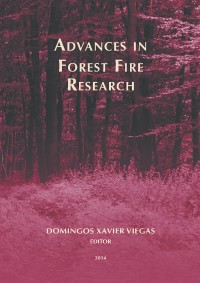Please use this identifier to cite or link to this item:
https://hdl.handle.net/10316.2/34223| Title: | Analysis of fire hazard in camping park areas | Authors: | Almeida, Miguel Azinheira, José Raul Barata, Jorge Bousson, Kouamana Ervilha, Rita Martins, Marta Moutinho, Alexandra Pereira, José Carlos Pinto, João Caldas Ribeiro, Luís Mário Silva, Jorge Viegas, Domingos Xavier |
Keywords: | forest fire;camping parks;wildland urban interface;WUI;modelling;mapping;fuel characterization;tents;camping materials | Issue Date: | 2014 | Publisher: | Imprensa da Universidade de Coimbra | Journal: | http://hdl.handle.net/10316.2/34013 | Abstract: | The common location of camping parks in forested or wooded areas, the normal use of combustible material by the campers and the frequent use of campfires to cook turn camping parks into areas with a high propensity for the occurrence of fires. Moreover, fires occurring close to parks induce to evacuations that disturb their normal activities. Despite the occurrence of several of such events, the associated risk is not yet well studied. Project FireCamp is being developed in Portugal to analyse the propensity of fires in camping parks. This project has as main objectives: (1) analysis of past occurrences; (2) analysis of the combustibility of typical materials used in camping parks such as tents, sleeping bags or camping mattresses; (3) characterization of the camping park fuel cover and its surrounding by image analysis taken by UAV; (4) modelling of fire spread in camping parks; and (5) security measures for fire prevention and mitigation. A pilot study is being carried out in the Camping Park of Coja, in Arganil - Coimbra, which in September of 2012 was threatened by a forest fire that arrived to the perimeter of the camping park. A survey of this occurrence was done. Several laboratory tests have been carried out in order to analyse the properties of the camping materials. Real tents with and without typical material inside (e.g., sleeping beds) were burnt in controlled environment in order to determine the mass loss decay, the increase of temperature and the convective winds produced. In parallel, each type of typical camping materials were analysed to determine the calorific power value. Considering that external fires frequently threat camping parks, the survey of the neighbourhood of camping parks is also of great interest. In FireCamp Project, the aerial photographic survey of the camping park of Coja was carried out in order to produce a fuel map of this area. Based on this fuel map, a stochastic model to predict the fire spread in the covered area was set up. The results obtained in the pilot study of the project applied to the Camping Park of Coja are also presented. | URI: | https://hdl.handle.net/10316.2/34223 | ISBN: | 978-989-26-0884-6 (PDF) | DOI: | 10.14195/978-989-26-0884-6_72 | Rights: | open access |
| Appears in Collections: | Advances in forest fire research |
Files in This Item:
| File | Description | Size | Format | |
|---|---|---|---|---|
| 978-989-26-0884-6_72.pdf | 2.12 MB | Adobe PDF |  |
Items in DSpace are protected by copyright, with all rights reserved, unless otherwise indicated.
